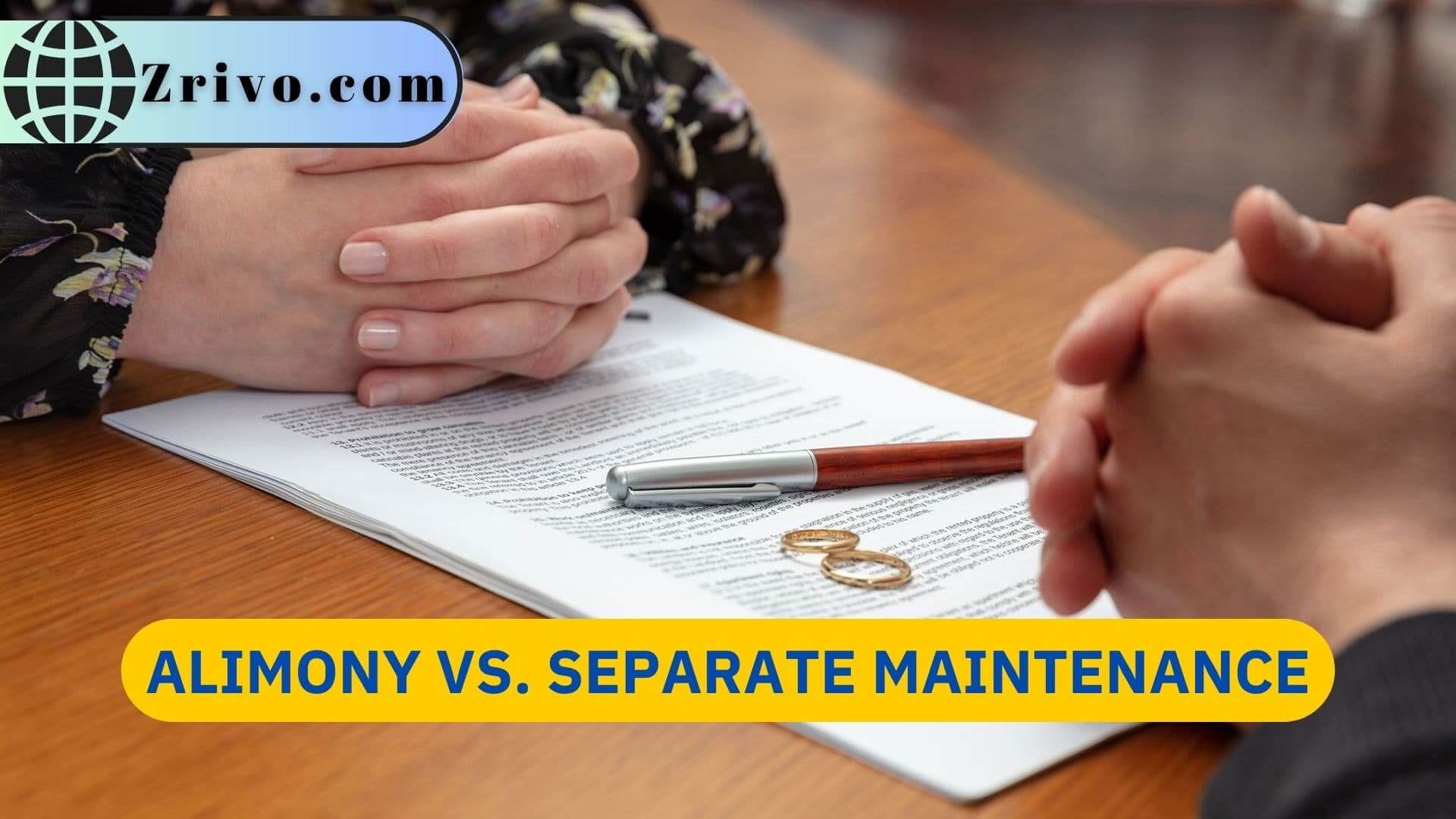
Separate maintenance and alimony are two legal arrangements that can be used to provide financial support to a spouse after a divorce or legal separation. Alimony refers to the financial support paid by one spouse to the other, while separate maintenance refers to the court-ordered support paid to a spouse during a legal separation. In the United States, both alimony and separate maintenance can be awarded based on a range of factors, such as the length of the marriage, the earning potential of each spouse, and the standard of living during the marriage. The amount and duration of payments for both alimony and separate maintenance can vary depending on the case’s specific circumstances.
Alimony, also known as spousal support or maintenance, is a court-ordered payment that one spouse makes to the other after a divorce or legal separation. The purpose of alimony is to help the recipient spouse maintain a reasonable standard of living, particularly if they have been financially dependent on their spouse during the marriage. Alimony payments can be temporary or permanent and may be made in a lump sum or in regular installments.

How Does Alimony Work in the U.S.?
In the United States, the rules governing alimony vary by state, but there are some general principles that apply in most cases. To determine whether alimony is appropriate, a court will consider a range of factors, such as the length of the marriage, the earning potential of each spouse, and the standard of living during the marriage. If the court decides that alimony is appropriate, it will determine the amount and duration of the payments based on these and other factors. In some cases, the spouses may negotiate an alimony agreement outside of court.
Types of Alimony
In general, there are several different types of alimony that can be awarded in a divorce or legal separation:
- Temporary Alimony: Awarded during the divorce process and ends once the divorce is finalized.
- Rehabilitative Alimony: Awarded to help a spouse gain education or job training to become financially self-sufficient.
- Permanent Alimony: Awarded when one spouse cannot support themselves after the divorce.
- Reimbursement Alimony: Awarded when one spouse supported the other during education or training that helped increase their earning potential.

Is Alimony Taxable?
For divorces finalized before January 1, 2019, alimony payments were tax-deductible for the payer and taxable income for the recipient. However, for divorces finalized on or after January 1, 2019, alimony payments are no longer tax-deductible for the payer. The recipient no longer needs to report the payments as income.
How Long Does Alimony Last?
The duration of alimony payments depends on the specific circumstances of the divorce or legal separation. Some factors that may affect the duration of alimony payments include the length of the marriage, the earning potential of each spouse, and the standard of living during the marriage. Alimony can be awarded for a set period of time until certain conditions are met or on a permanent basis.
What is Alimony Amount Criteria?
There is no set formula for calculating alimony amounts. Instead, the amount of alimony awarded is determined by a variety of factors, such as the length of the marriage, the earning potential of each spouse, and the standard of living during the marriage. The court may also consider other factors, such as the age and health of each spouse, their respective assets and debts, and their contributions to the marriage.
How is Alimony Calculated?
To calculate alimony, the court will consider a range of factors, such as the length of the marriage, the earning potential of each spouse, and the standard of living during the marriage. The court may also consider other factors, such as the age and health of each spouse, their respective assets and debts, and their contributions to the marriage. Once the court has considered these factors, it will determine the amount and duration of the alimony payments.

What is Separate Maintenance?
Separate maintenance, also known as legal separation or separate support, is a court-ordered payment that one spouse makes to the other while the couple is still legally married but living apart. Separate maintenance is often sought by couples who are not ready to get a divorce but want to live separately and establish financial support arrangements. In many states, obtaining a separate maintenance order is similar to obtaining a divorce, including the need to show grounds for the separation.
How Does Separate Maintenance Work in the U.S.?
As with alimony, the rules governing separate maintenance vary by state, but the general principles are similar. To obtain a separate maintenance order, the spouses must file a petition with the court and provide evidence to support their request. The court will consider a range of factors, such as the reasons for the separation, each spouse’s financial needs, and the couple’s assets and debts. If the court decides to grant the petition, it will issue a separate maintenance order that specifies the amount and duration of the payments.

Types of Separate Maintenance:
Separate maintenance, also known as legal separation, is a court order that allows a couple to live apart and make decisions about child custody, support, and property division, without officially ending their marriage. There are different types of separate maintenance that can be awarded by the court, including:
- Temporary Separate Maintenance: Awarded during the legal separation process and ends once the legal separation is finalized.
- Permanent Separate Maintenance: Awarded when a couple chooses to live separately but does not wish to divorce for personal or religious reasons.
- Rehabilitative Separate Maintenance: Awarded to help a spouse gain education or job training to become financially self-sufficient.
Is Separate Maintenance Taxable?
Separate maintenance payments are usually tax-deductible for the payer and taxable income for the recipient, similar to alimony payments. However, the tax implications may vary depending on the case’s specific circumstances, so it is important to consult with a tax professional to understand the tax implications of separate maintenance.
How Long Does Separate Maintenance Last?
The duration of separate maintenance payments depends on the specific circumstances of the legal separation. Some factors that may affect the duration of separate maintenance payments include the length of the marriage, the earning potential of each spouse, and the standard of living during the marriage. Separate maintenance can be awarded for a set period of time until certain conditions are met or on a permanent basis.

What is Separate Maintenance Amount Criteria?
Similar to alimony, there is no set formula for calculating separate maintenance amounts. The amount of separate maintenance awarded is determined by a variety of factors, such as the length of the marriage, the earning potential of each spouse, and the standard of living during the marriage. The court may also consider other factors, such as the age and health of each spouse, their respective assets and debts, and their contributions to the marriage.
How is Separate Maintenance Calculated?
To calculate separate maintenance, the court will consider a range of factors, such as the length of the marriage, the earning potential of each spouse, and the standard of living during the marriage. The court may also consider other factors, such as the age and health of each spouse, their respective assets and debts, and their contributions to the marriage. Once the court has considered these factors, it will determine the amount and duration of the separate maintenance payments.